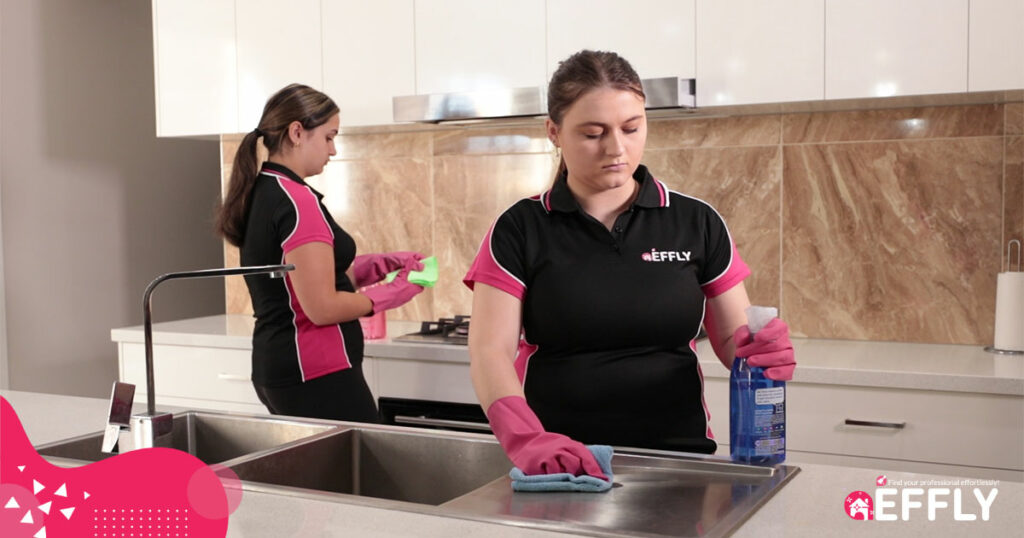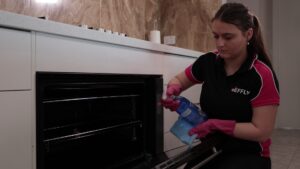Since we are not over the COVID 19 pandemic yet, we constantly look for tips to prevent the spread of the virus.
And with plenty of resources available within our reach, we can get confused by information overload.
One of them is knowing when to hire cleaning services or sanitizing services.
According to the Centers for Disease Control, one of the best practices to prevent the spread of diseases is cleaning and sanitizing or disinfecting surfaces.
To effectively kill the virus, we need to understand that these three terms are not interchangeable. We should also know the difference between cleaning, sanitizing, and disinfecting so that we can incorporate them into your regimen.
Cleaning vs. Sanitizing/Disinfecting vs. Sterilization
Cleaning is simply getting the dirt out while sanitizing to lower the level of bacteria. Meanwhile, disinfecting means killing them all.
Here is an explanation from CDC:
Cleaning
Cleaning is removing dirt, impurities, and germs from a surface. The action does not kill the germs. However, removing them can lower their number and the risk of infection.
Disinfecting/Sanitizing
Disinfecting /sanitizing refers to using chemicals to kill the germs on the surface. The process does not clean the surface or remove the germs. However, by killing the germs, it can lower the risk of infection.
Sterilization
Sterilization is the process of eliminating or destroying all forms of microbes. This is carried out by health care facilities using chemical or physical methods.
Difference Between Cleaning and Sanitizing
Explaining further what CDC has said, cleaning is clearing the surface from debris and deposits while sanitizing is killing germs after the surface is cleaned.
When you visualize it, cleaning comes first, regardless of the surface and followed by sanitizing.
Cleaning
To clean means you have to physically remove the visible dirt, spills, dust, food particles, etc. by wiping, brushing, or wiping it down. Cleaning is on the surface level and does not readily eliminate germs but can reduce their numbers.
The common products and tools used in cleaning are:
- Detergents
- Soaps
- Vacuums
- Dusters
- Glass Cleaners
- Degreasers
Sanitizing
Sanitizing, on the other hand, is employing means to reduce the number of microorganisms like viruses, bacteria, and fungi on an already cleaned surface. It should be deemed safe for public use. Based on CDC requirements, the sanitizing agent should kill 99.999% of germs in less than 30 seconds.
This method may arrest the growth of harmful bacteria, but it does not kill them All. Sanitizing services employed in schools, restaurants, corporate offices, and hospitals are only meant to prevent the spread of microorganisms.
Disinfecting
There is another term thrown into the mix that makes it all confusing - disinfecting. It is similar to sanitizing as it means reducing the number of microorganisms. The only difference lies in the amount each can eliminate.
Sanitizing can kill the germs, but the process cannot make any antiviral claim.
Disinfecting, however, can kill about 100% of bacteria, viruses, and fungi. It targets disease-causing germs like flu, coronavirus, and norovirus.
Since disinfecting is more potent than sanitizing, it is usually employed in vulnerable areas like daycare centres and healthcare facilities.
Sanitizing is enough for food prep areas like cutting boards and countertops while disinfecting should be used in bathrooms and fitness gyms.
ABCs of disinfection:
- Alcohol
- Bleach
- Chlorine
- Sterilizing
Sterilizing
Another term that needs explaining is sterilizing. When we say sterilize, it means we have to completely eradicate the bacteria (including spores), viruses, and fungi. We frequently hear this term used in hospitals to prevent the infection and spread of diseases from patient to patient.
You may want to check this article on the Benefits You Will Get with Professional Antiviral Sanitization.
Here are some of the methods used in sterilization:
- Steam
- Heat
- Chemicals
- Radiation
To Summarize
Cleaning - removes the dust, dirt, and debris, among others from surfaces.
Sanitizing - removes the bacteria from the surfaces.
Disinfecting - kills the bacteria and viruses from the surfaces.
Sterilizing - completely eradicate all the microorganisms from the surfaces.
Using the right method will guarantee the desired results. If you want to remove the dirt, debris, and dust from your homes, you can ask for cleaning services. However, we must be vigilant as the war against COVID 19 still rages on.
We, at Effly, recommend the combination of cleaning and sanitizing services. It guarantees a clean and healthy environment for you and your family.

Julie is a passionate writer a mother of three kids and a dedicated cleaning enthusiast, eager to share valuable insights and practical tips on maintaining a clean and organized home. With a deep understanding of the challenges of maintaining a tidy living space, Julie has spent years honing its expertise in cleaning methods, organizing techniques, and sustainable practices.


